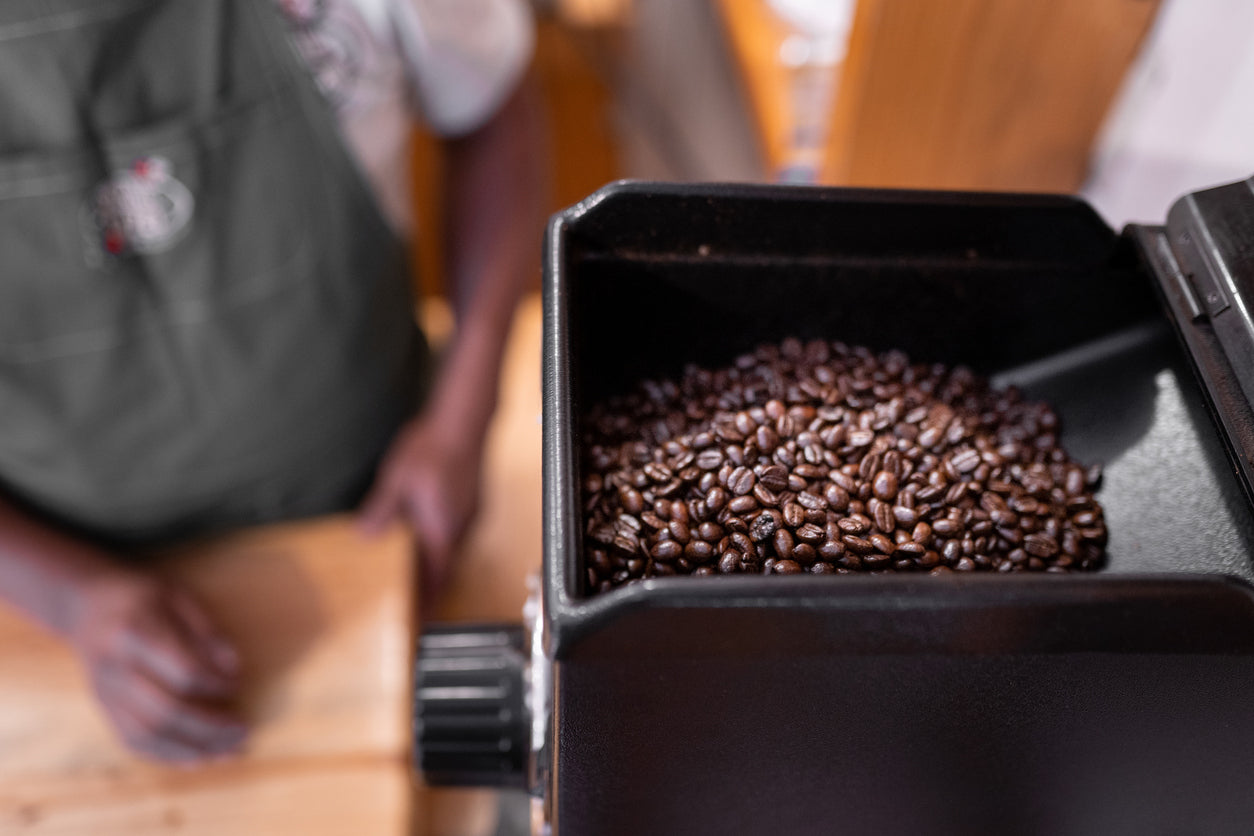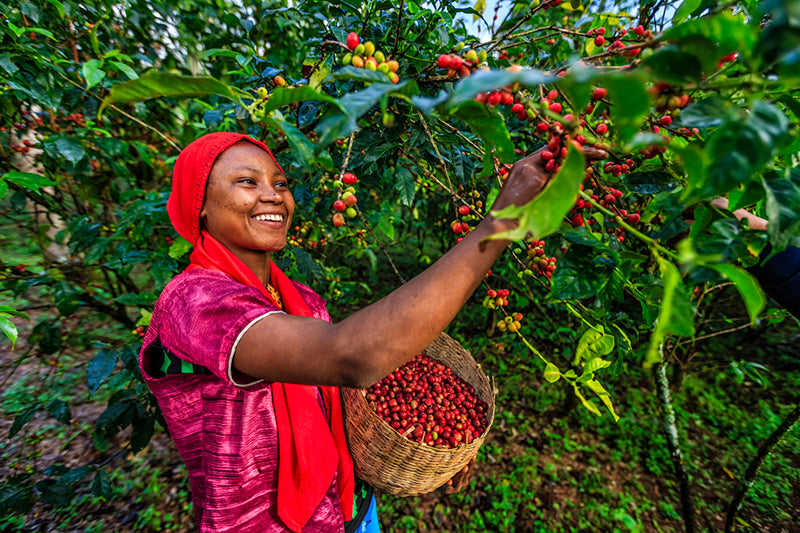
For millions of people, coffee is more than just a morning ritual. This beloved drink has for centuries been one of the most popular and frequently consumed drinks in the world, but have you ever wondered how this delicious beverage is actually made possible?
The process is likely far more interesting than you might think, involving both precise methods and novel processes developed over centuries. From the lush highland plantations of Ethiopia to the volcanic peaks of Rwanda, these incredible little beans have taken over the world, but how is African coffee actually processed?
African coffees undergo an incredible process of planting, cultivation, harvesting, drying, milling, and roasting before they are packaged and shipped to you. Let’s take a look at this process in greater detail.
Coffee Cultivation
Much like other great journeys, the seed of this story had humble beginnings. Traced through generations of folklore and tradition, coffee on the African continent has deep roots throughout the region. And while coffee can be found in many regions worldwide, Africa is unique not only for its incredibly rich soils, but also the sheer variety of different growing conditions used to cultivate them.
Regardless of origin, coffee crops in Africa typically begin the same way. Across the continent, in the small farms and villages of my homeland, farmers work tirelessly to select only the highest quality seeds in time for planting before the rainy season begins. In about six months, these tiny seeds will grow into sturdy little seedlings strong enough for transplanting into open fields. But it isn’t as simple as digging a hole and dropping them in — all varieties of coffee need a short but important list of conditions to thrive. Variables like rainfall, temperature, and even the speed at which rainfall drains from the field all affect the taste of the coffee beans.
Something that always surprises people when they are learning about coffee is just how long it takes from planting to harvest. For most African varieties, it can take six to seven years before these valuable little shrubs can produce coffee. Because of this, many African coffees come from small, family-owned farms where knowledge and expertise can be shared over generations, creating a foundation for producing truly peerless quality coffees.
An Exceptional Crop
There’s so much more to African coffee than simply being able to get it to grow, however. Once these crops have been established, they require nearly constant cultivation to ensure that harvests are of the highest quality. Every day, farmers weed, fertilize, and prune their fields to allow these plants to focus on growing, concentrating their efforts on producing the small, flavorful fruit containing our friend, the coffee bean.
Even under the most ideal of circumstances, farmers must still contend with disease and blight, natural disasters, and pests. Despite this — or maybe because of it — Africa has some of the world's oldest and most well-established farming practices. In fact, in recent years, interest from around the world has led to the intense study of these practices and the establishment of a growing number of research facilities dedicated to distilling precisely what makes African coffees so exceptional.
A Celebration of Labor (and Love!)
If everything for a farmer has gone well, then it is finally time to harvest — a deceptively difficult process that relies as much on love as it does on careful discernment.
In a meticulous dance, workers repeatedly comb through fields of coffee plants, carefully selecting cherries at their peak, which can be frustratingly fleeting. With expert eyes and deft hands, these communities can harvest only the best from their fields, preserving the exceptional quality that African coffees have come to be known for worldwide.
Two Traditions
As soon as the cherries are picked from the tree, the clock starts ticking. The fruits must be processed quickly to avoid spoilage and ensure their full flavor can be unlocked. In Africa, there are two primary methods for processing coffee beans once the cherries have been harvested: wet and dry.
In the Dry Method, which is typically used in places like Ethiopia, where the climate can be quite arid, processing begins by carefully drying the cherries, which are regularly raked and agitated to ensure even drying and to protect against mold. Once dried, the fruit is then removed, leaving the tiny bean behind. Dry processed coffees tend to be sweeter in profile and are lauded for their full-bodied flavors of chocolatey, fruity notes. Because the bean is dried within the fruiting body, it’s able to absorb many of the sugars and flavors during the drying. For many farmers, this is an ideal method because it is less resource-intensive and somewhat simpler than “wet” processing.
For other coffee growers, the Wet Method, or wet processing, is preferred for the cleaner, brighter taste it produces. Wet processing also allows for more consistent control over fermentation and drying, which produces a high-quality bean with a more acidic, less earthy flavor than a bean processed with the dry method. When these coffees are processed “wet,” the beans are removed from the fruit shortly after processing, reducing the time it takes for the beans to dry.
Polishing a Treasure
After the initial processing is complete, the beans still need to be dried and milled before they are exported. This typically consists of either slow, sun drying or fast, mechanical drying. Regardless of the method, the beans are typically spread out onto beds for this step and are constantly agitated to avoid spoilage or inconsistent drying.
The now-dry coffee beans are then set to be milled, where they will have their outer layers removed. This begins by hulling the beans in a machine that strips away the husk. Milled beans are then graded and sorted based on factors like weight, size, and appearance. Over the years, rigorous standards have been developed, ensuring only the highest quality beans graduate from this process. It’s precisely because these standards are so high that African coffee has maintained its superior standing in the global market.
Upholding Quality
One final step remains before these coffees make their way to their final destination. Before coffees can be sold, trained experts meticulously check and evaluate every harvest, using stringent standards to test coffees for each variety’s aroma, flavor, body, acidity, and balance. These five key elements help African producers ensure that every cup from the continent contains the unique and extraordinary flavor of its African homeland.
Roasting to Perfection
While the majority of the flavors found in African coffees are developed in the field, roasting is yet another crucial step to unlocking the intense flavors and aroma of these coffees. For African varieties, roasters carefully craft profiles that can complement the bean’s natural qualities — emphasizing bright florals in lighter roasts or drawing on deeper, fruitier notes in darker roasts.
During roasting, each bean undergoes a crucial chemical transformation as they’re heated, turning from green to a beautiful shade of brown. During this process, something called the Maillard reaction creates the signature flavors coffee drinkers have come to love and crave.
Once the ideal roast for each variety is achieved, the beans are then cooled to halt the process before being packaged to seal in aromas and freshness.
Embracing the African Coffee Experience
Regardless if you enjoy a zesty, refreshing Sidamo organic from Ethiopia or prefer the rich, chocolatey coffees from Mt. Kilimanjaro, why not start exploring the world of African coffees yourself?
Order a bag from RichlandHub today and let the aromas envelop you as you explore the rich, multifaceted flavors that traveled so far and have gone through so much to delight you!


